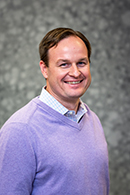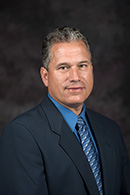Civil engineering professors funded by NRC to study long-term loading of concrete
Friday, Jan. 22, 2021
MANHATTAN — Two faculty members from the Kansas State University Department of Civil Engineering have been awarded a three-year, $418,161 grant from the U.S. Nuclear Regulatory Commission in support of its licensing activities and mission of providing reasonable assurance of safety from the commercial nuclear fleet: the 96 operating U.S.-based power reactors.
The project, "Addressing Technical Knowledge Gaps for Concrete Creep, Creep Recovery and Creep Fracture," will be led by Christopher Jones, associate professor and Wallis-Lage Family Cornerstone teaching scholar, with co-investigator, Robert Peterman, professor and Mark H. and Margaret H. Hulings chair in engineering.
The research will develop experimental and computer modeling approaches, and experimental data to enhance understanding of the response of concrete to long-term loading. Long-term loading, for this problem, is primarily the prestressing force applied to the concrete to limit cracking and also includes the self-weight of the structure. Jones said concrete is known to "creep" in response to sustained loading.
"Creep is additional displacement, over and above the instantaneous displacement that occurs in a loaded material over time," Jones said. "It can lead to cracking and damage if extremely advanced, but its most common manifestation is unwanted or excessive deflection of structural members; for example, a bridge droops too low or a column gets too short."
Recent findings have indicated creep deformation to be mostly irrecoverable for concrete and that the nature of the applied load, whether compressive, tensile or shear, profoundly influences the amount of creep observed. In this research the influence of nuclear radiation on the creep behavior of concrete will also be investigated.
"It’s a bit harder to describe the phenomenology in a power reactor containment building," Jones said, "but basically the material in the containment deforms inward and reduces the available prestress force in the prestress cables — much in the way running shoes or hiking boots get looser as you wear them for a bit and you have to cinch them down again."
The team expects a more technically sound understanding of the interplay between material parameters of the concrete, the nature of the applied load and other external stimuli such as radiation or relative humidity will lead to a significantly more robust predictive capability for creep in concrete.
"As with other recently funded projects within the Carl R. Ice College of Engineering, this award enhances the profile and reputation of K-State engineering and is a testament to the impact our faculty have on problems of national importance," Jones said.


